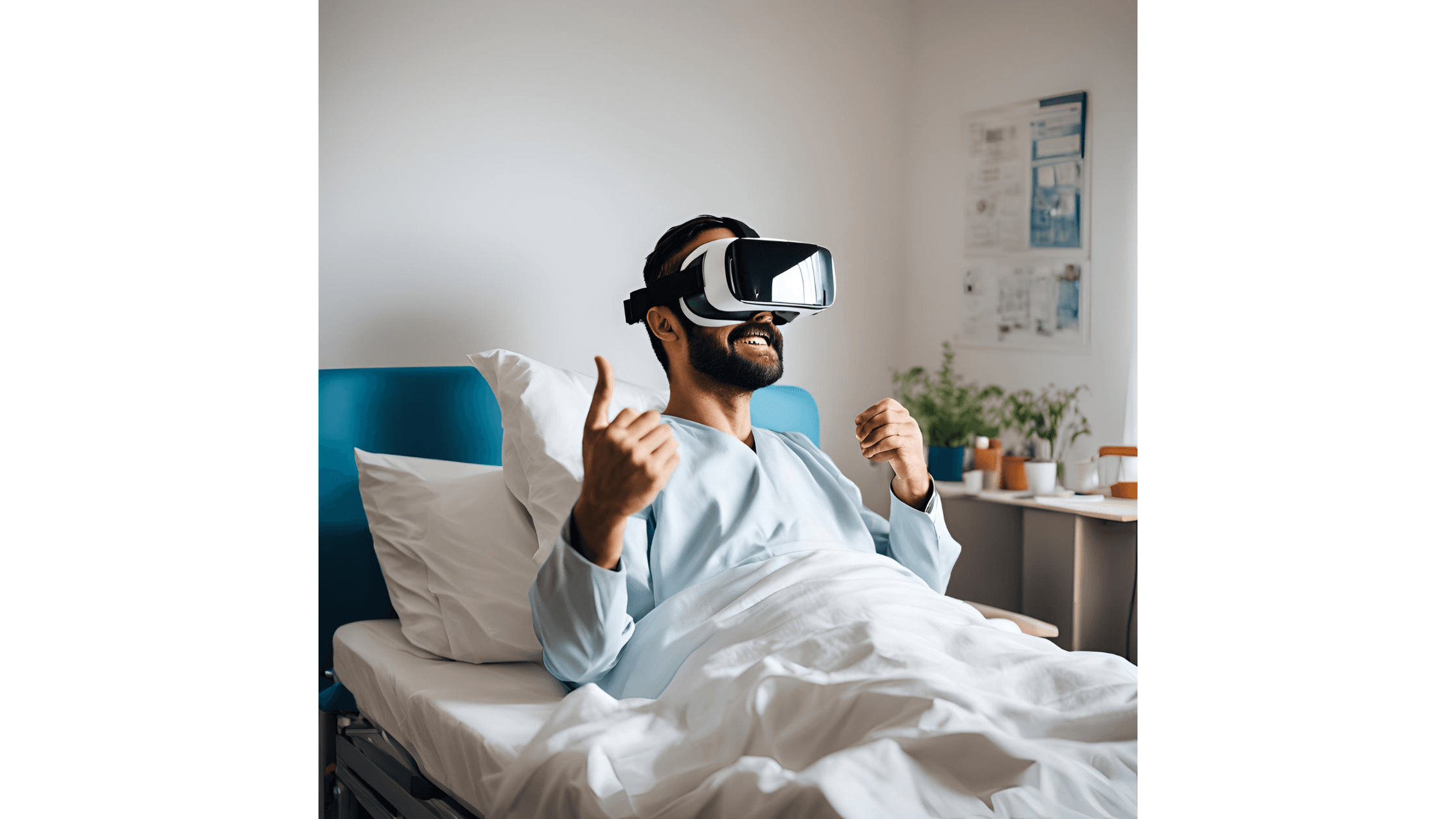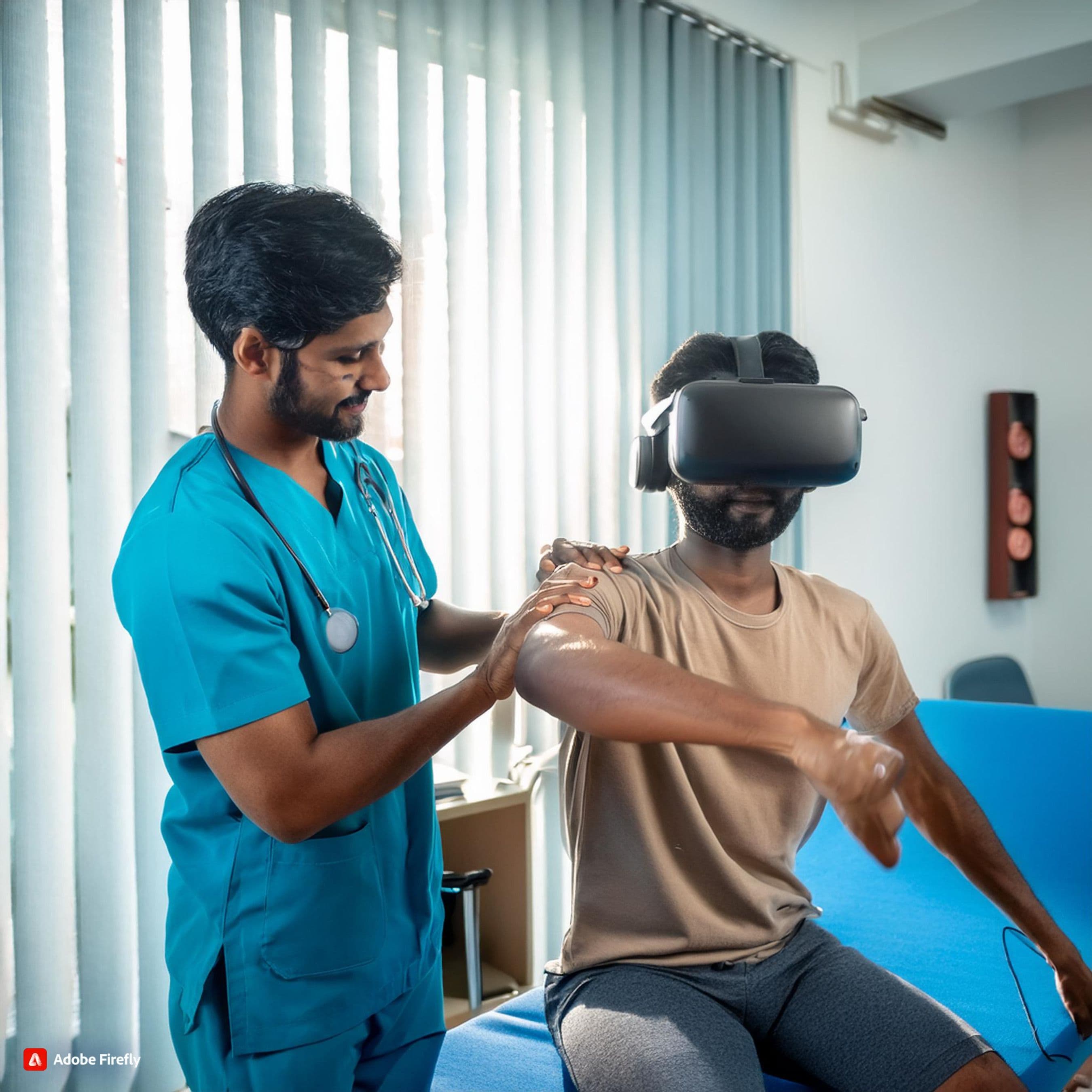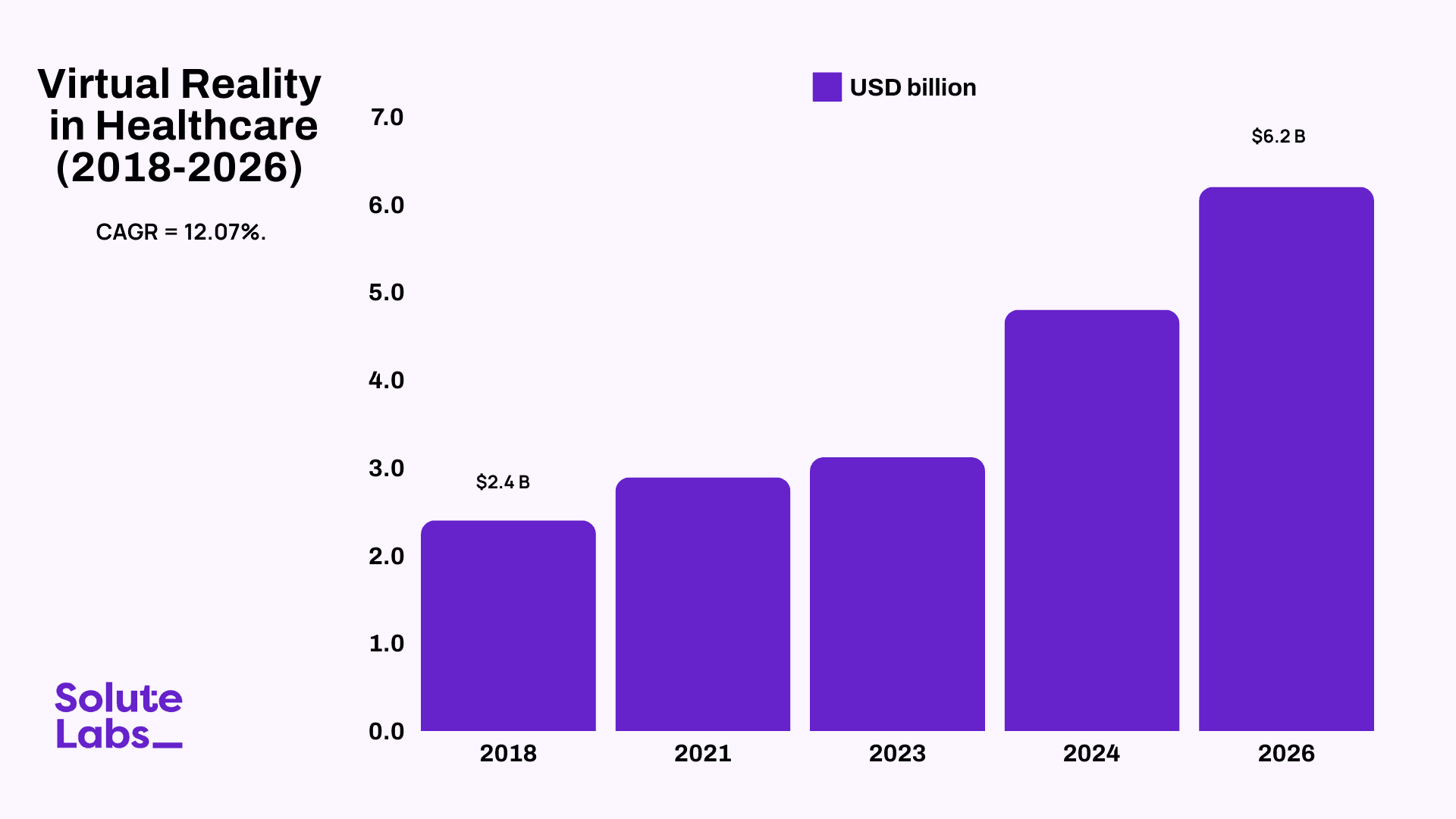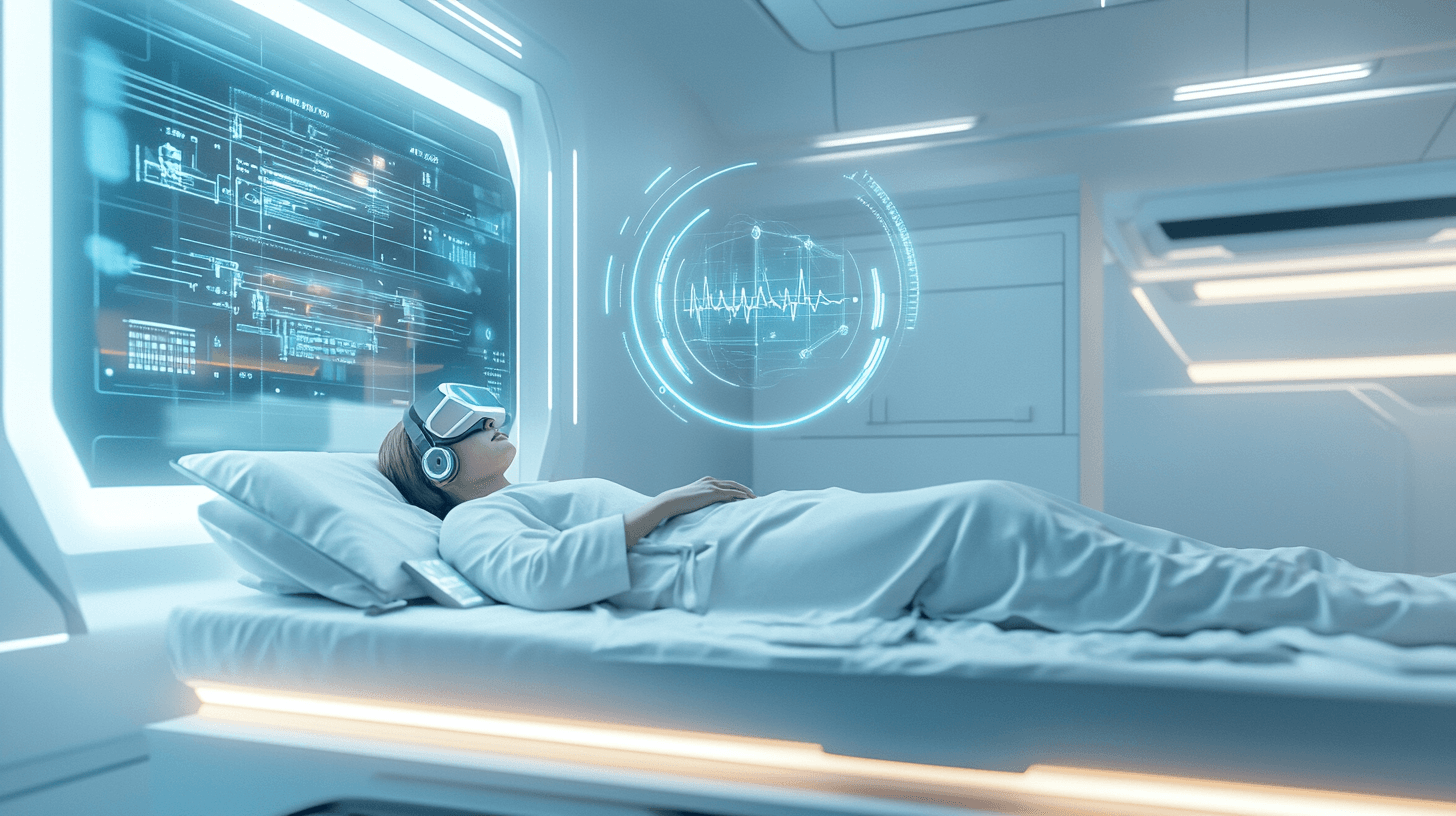Undoubtedly, technology is advancing with each passing day and easing the lifestyle of humankind. Nowadays, we live in a digital era where the accomplishment of every task is a single click away.
With millions of technologies flourishing globally by assisting in every task, virtual reality (VR) is yet another computer-based technology that benefits several fields.

From interior design, retail, architecture, communication, and tourism to gaming, supporting sales, education, and healthcare, the applications of virtual reality extend to uncountable areas.
After the outbreak of COVID-19, virtual reality has become a game-changer for the healthcare industry, along with other significant healthcare technology trends.
In this article, we will discuss all the details of VR in healthcare, including how VR works for healthcare and all the benefits and applications of VR in healthcare.
What is Virtual Reality in Healthcare?
Virtual reality has been around for years now. With the advancements in technology, it has also entered healthcare. VR is revolutionizing health care through its immersive digital experiences by providing immersive tools to help students and professionals in medical training practice the most complex procedures on simulated patients, thus carrying no risk! Besides, VR helps in diagnosis by creating detailed visualizations of patient data, which helps healthcare professionals diagnose problems more precisely.
Common Examples of VR In Healthcare
Virtual reality works for healthcare in various ways. For example, it provides medical training by showing scenarios and common situations that can arise in physical settings. Most of the Top Hospitals and Medical universities across the world have implemented VR applications to train professionals, perform surgery, or provide medical education remotely.
It involves problem-oriented learning, internal body organ explanation by virtual visualization, and teaching the necessary communication skills to students.
By distracting patients' attention away, virtual reality is known to relieve chronic pain in people who are recovering from any disease or when the use of pain medicine or anesthesia is contraindicated.
Another example of VR in the medical field is assistance in physical therapy and rehabilitation for patients who find it difficult to exercise because of pain. VR helps and motivates them to complete their physical activity by distracting their attention away from pain with the help of specific visual aids, sensations, and sounds.

Benefits of VR in the Healthcare Industry
The benefits of virtual reality in healthcare are:
- Provides a Safe Environment: It gives realistic medical training to doctors and students by providing a safe environment, thus eliminating health risks.
- Promotes Fast Healing: Wearing VR goggles eliminates the boredom and stress of the hospital environment for patients admitted to hospitals for the long term and allows them to explore a virtual world in their hospital beds. This promotes fast healing.
- Beats Phobias: VR provides an environment that visualizes and feels real, which helps patients and medical professionals defeat their phobias and fears.
- Distracts Attention: VR effectively distracts patients' attention from anything they continuously face, like chronic pain, making it easier for them to tolerate the ailment. Additionally, it can also distract children from the pain they may experience from blood tests, injections, and other medical procedures.
- Cost-Effective and Saves Time: VR is cost-effective compared to visiting regular physical setups and saves time.
Market Summary Of Virtual Reality In Healthcare
In 2018, the global virtual reality healthcare market was estimated at $2.4 billion and is expected to reach up to $6.2 billion by 2026.

VR Applications in Healthcare
There are numerous applications of VR, and we have also discussed some of them above. From easing chronic pain and fears by distracting attention to providing full medical training to professionals, the applications of VR in healthcare are unlimited and are continuing to rise.
There are three types of virtual reality:
- Non-immersive VR
- Semi-immersive VR
- Fully-immersive simulation VR
Virtual reality applications in different sectors of the healthcare industry include:
1. Surgery
VR lets users practice different surgeries in the virtual space with the help of haptic controllers. The VR software guides the surgeons with the help of necessary steps. VR is also used to explain the surgery process to patients.
2. Pain Management
As we discussed above, by diverting the patient's attention, VR manages the level of chronic pain. This effectively reduces healthcare costs and minimizes the use of painkillers.
3. Physical Therapy
VR assists in physical therapy and offers a wide range of exercises supervised by an AI virtual instructor who monitors the patient's condition and ensures that the exercises are performed appropriately.
4. Medical Education And Training
With the help of tutors and training scenarios, virtual learning sessions are arranged for medical students.
5. Rehabilitation
VR also provides rehabilitation to patients with the help of virtual therapists or built-in VR software programs.
Suggested Read
IoT in Healthcare
View Blog
What the Future beholds for VR?
Virtual reality is one of those technologies with the largest potential for growth in the future. Today, VR applications extend to taking total control over the person's senses and emotions, for example, sight, feelings, and hearing, which makes the environment feel very realistic.
In the future, VR applications are expected to involve other features, such as touch and smell, to deepen the sense of a realistic environment. Moreover, VR devices or electronic equipment will also become cheaper and lighter in the future to eliminate the hurdle of using VR.
Explore the Latest Healthcare Technologies & Innovations with SoluteLabs
SoluteLabs has provided expert services in building quality healthcare solutions to clients across the globe over the past 10+ years. Our highly efficient team with immense multi-domain experience, trained in VR and other new technologies, would assist in solving various complicated requirements to stay on top among the competitors.






